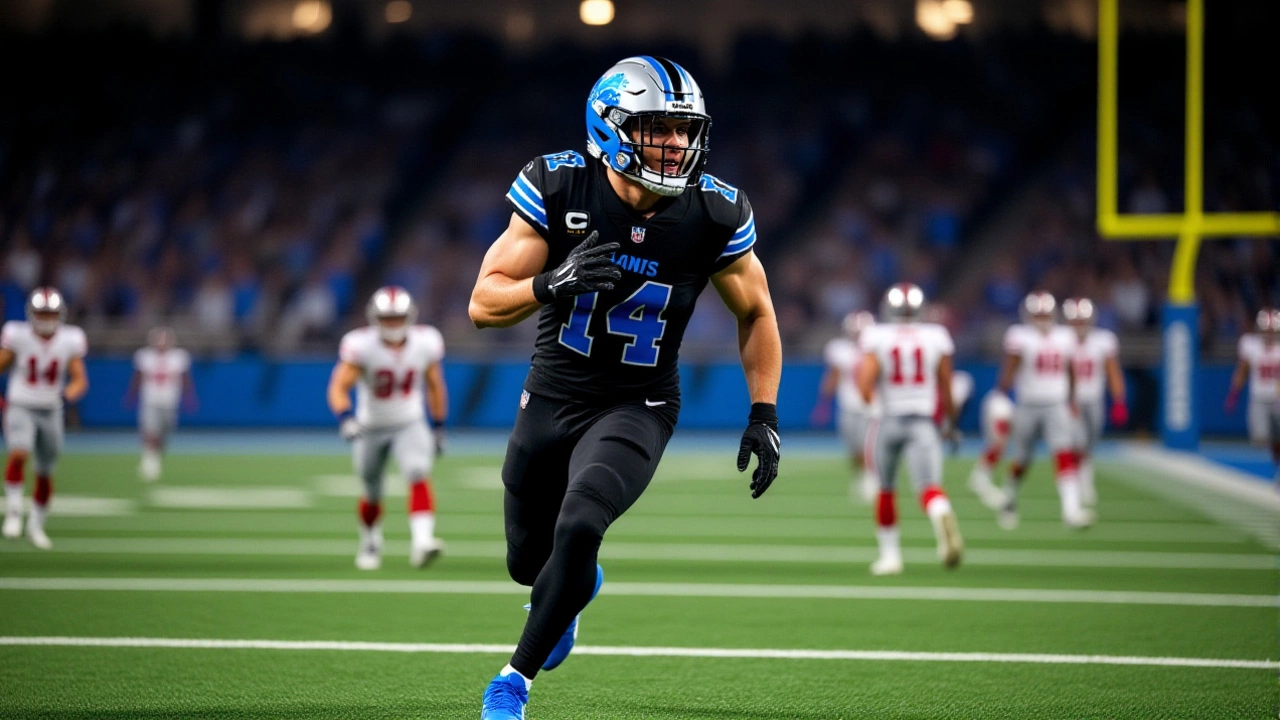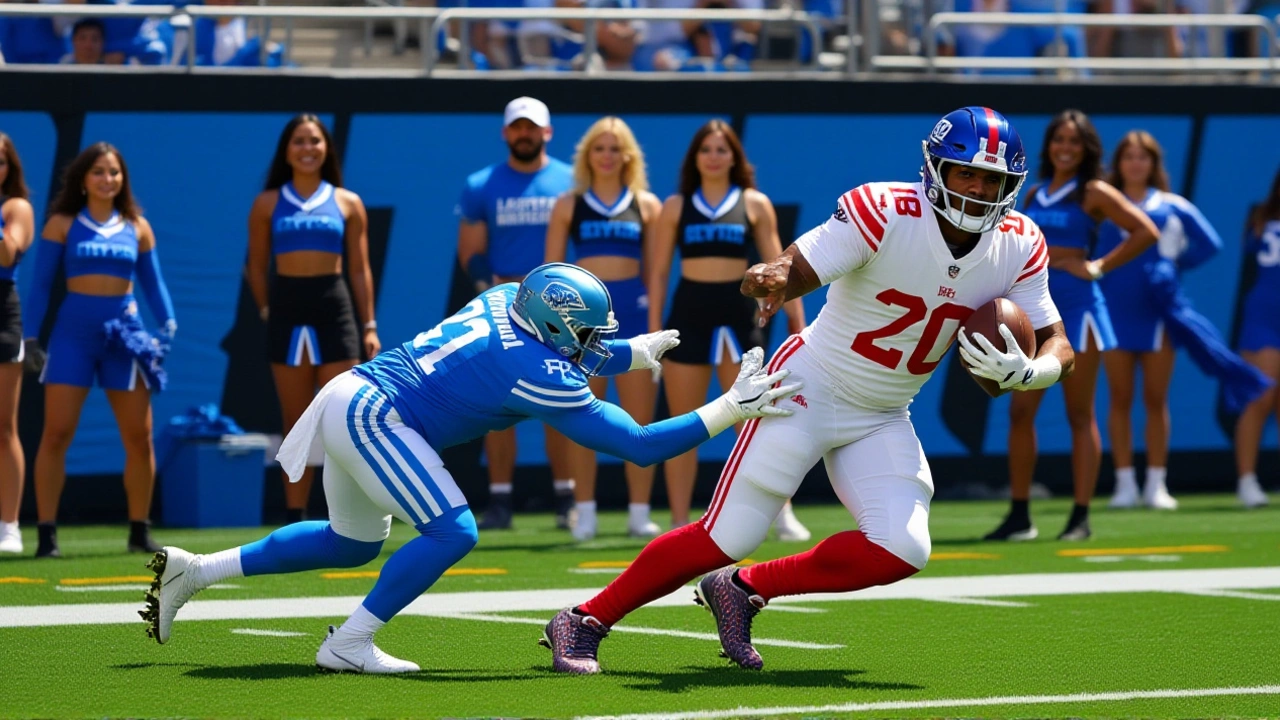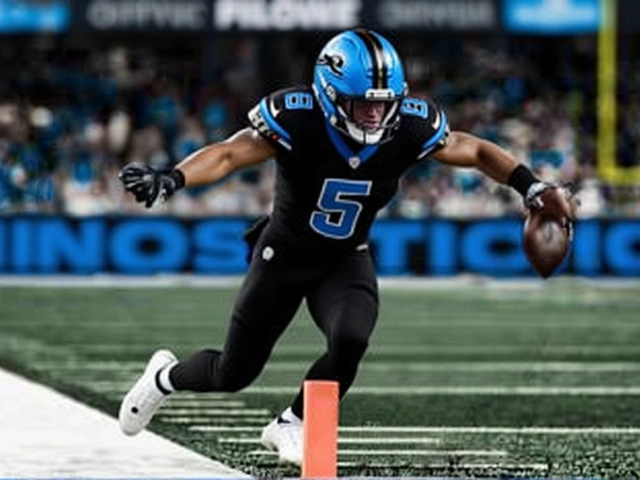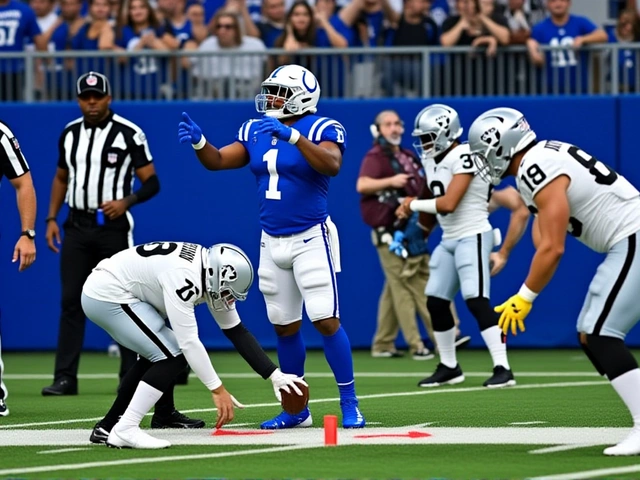When Jahmyr Gibbs broke free for a 69-yard touchdown on the first play of overtime at Ford Field on November 23, 2025, the crowd of 64,613 didn’t just erupt—they exhaled. The Detroit Lions had been down by 10 points with under six minutes left, their playoff hopes dangling by a thread, and the New York Giants, a 2-9 team, were minutes away from pulling off the unthinkable. Then Gibbs did what only a handful of running backs in NFL history can do: turned a collapsing game into a legend-defining moment.
A Night That Rewrote the Record Book
Gibbs didn’t just win the game—he rewrote the Lions’ record book. His 219 rushing yards were the most by any Detroit player since Barry Sanders retired in 1999. Add in 45 receiving yards on 11 catches, and his 264 total scrimmage yards became the highest single-game total in franchise history for a non-Sanders back. He didn’t just score three touchdowns—he did it in three different ways: a pylon-reach catch in the second quarter, a 49-yard burst through the heart of the Giants’ defense in the fourth, and finally, that overtime rocket that left Giants safety Dane Belton grasping at air. According to NFL Next Gen Stats, Gibbs hit 22.2 mph on that final run—the fourth-fastest speed ever recorded by an NFL ball carrier this season, and one of only three times he’s cracked the top four. "I pretty much knew I had him," Gibbs said afterward, shrugging like it was a Tuesday practice. "I just had to, you know, run."The Comeback That Wasn’t Supposed to Happen
The Lions weren’t just losing—they were unraveling. Their offense had 482 total yards but only 22 first downs. The Giants, with 25 first downs, were moving the chains, controlling time, and grinding Detroit down. At one point, boos rained down on Ford Field as the Lions fell behind 27-17 with 5:47 left. Fans were already scrolling for Thanksgiving travel plans. Then came Gibbs. His 49-yard TD run, a perfect read of the defensive gap and a burst of acceleration that looked like a sprinter hitting the final straight, cut the lead to 27-24. The defense, led by Alex Anzalone, held firm. On the next Giants drive, a critical third-down sack by defensive end Aidan Hutchinson forced a punt. Two plays later, Gibbs caught a swing pass from Jared Goff, broke a tackle at the line, and darted into the end zone for the 34-27 lead. "When Gibbs finds a crease," said Dan Campbell, the Lions’ head coach, "he’s gone. Not fast. Not quick. Just… gone."
Behind the Scenes: The Architects of Chaos
This wasn’t luck. It was design. Offensive coordinator Ben Johnson and running backs coach Duce Staley spent weeks tailoring plays to Gibbs’ unique blend of vision, agility, and top-end speed. They moved him all over the formation—slot, backfield, jet sweeps, even motioning him out wide. The Giants had no answer. "He corrects a lot of your mistakes as an offense," said wide receiver Amon-Ra St. Brown. "When he’s got the ball, you don’t have to be perfect. You just have to be there." Even teammates noticed. David Montgomery, Gibbs’ fellow running back, admitted: "He supplemented some of the struggles we were having. We were moving the ball but not converting. He made the big plays when we needed them most."Why This Matters Beyond the Box Score
The Lions are now 8-3, clinging to the second seed in the NFC. A loss here would’ve opened the door for the Packers, Vikings, and even the 7-4 Commanders. Instead, Gibbs’ performance gave them breathing room. General manager Brad Holmes, who drafted Gibbs 12th overall in 2023, called it "the kind of game you build a franchise around." Gibbs, now with 10 rushing touchdowns and 13 total scores this season, is on pace for 1,400 rushing yards and 1,000 receiving yards—a feat only two backs in NFL history have achieved. He’s not just a rookie sensation anymore. He’s a cornerstone. And the timing couldn’t be better. Next up: Thanksgiving Day, November 27, 2025, at Ford Field, against the Green Bay Packers (4-5-1). A win there could lock in home-field advantage. A loss? Still manageable. But Gibbs has made sure no one’s thinking about "what if."
What’s Next for Gibbs and the Lions?
The Lions’ offense still struggles with third-down efficiency—22 first downs on nearly 500 yards is unsustainable. But Gibbs’ explosiveness turns those drives into touchdowns instead of punts. The defense, while not dominant, has tightened under coordinator Aaron Glenn, holding the Giants scoreless in the final 20 minutes. For Gibbs, the next challenge is consistency under pressure. He’s averaging 6.1 yards per carry this season. That’s elite. But can he maintain it over a 17-game grind? Can he stay healthy? The Lions’ medical staff is already monitoring his workload, especially with the playoffs looming. One thing’s clear: when the Lions need a spark, they’re no longer waiting for a miracle. They’re just handing the ball to Gibbs.Frequently Asked Questions
How does Jahmyr Gibbs’ performance compare to other Lions running backs in history?
Gibbs’ 219 rushing yards are the most by any Detroit Lions player since Barry Sanders’ 205-yard game in 1997. No other Lions back since 1999 has topped 200 yards in a single game. His 264 total scrimmage yards also set a new franchise record for non-Sanders backs, surpassing Kevin Jones’ 254 yards in 2004. Only Sanders and Gibbs have posted multiple 200-yard rushing games in Lions history.
What impact does this win have on the Lions’ playoff chances?
The 8-3 record puts the Lions in second place in the NFC North, one game ahead of the Packers and Vikings. A win against Green Bay on Thanksgiving would likely lock up home-field advantage in the first round of the playoffs. With Gibbs carrying the offense, the Lions now have the most explosive weapon in the NFC, making them serious Super Bowl contenders despite defensive inconsistencies.
Why was Gibbs so effective against a Giants defense that had more first downs?
The Giants controlled the clock and moved the chains, but they gave up big plays. Gibbs’ three touchdowns came on plays of 3, 49, and 69 yards—each one a single explosive play that erased entire drives. While the Giants had 25 first downs, 14 of them came on drives that ended in field goals or punts. Gibbs turned short gains into touchdowns, which is why the Lions won despite being out-gained in first downs.
How does Gibbs’ speed compare to other NFL backs this season?
Gibbs’ 22.2 mph on his overtime touchdown is the fourth-fastest speed recorded by any NFL ball carrier in 2025. He now has three of the top four fastest runs this season, ahead of stars like Bijan Robinson and Jonathan Taylor. Only Kansas City’s Isiah Pacheco (22.6 mph) and Miami’s Raheem Mostert (22.4 mph) have topped him. His combination of speed and vision makes him uniquely dangerous.
What role did the coaching staff play in Gibbs’ success?
Offensive coordinator Ben Johnson and running backs coach Duce Staley designed a game plan that moved Gibbs all over the formation—slot, backfield, motion, and even as a decoy. They exploited the Giants’ tendency to over-pursue on outside runs, creating cutback lanes. Gibbs’ 11 receptions were a direct result of play-calling that kept defenses guessing. The staff didn’t just use Gibbs—they engineered the offense around his unique skill set.
What’s next for the Lions after this win?
The Lions face the Green Bay Packers on Thanksgiving Day at Ford Field, a critical matchup for NFC playoff seeding. With Gibbs healthy and in rhythm, Detroit is now a legitimate threat in the postseason. The defense must improve on third downs, but the offense—led by Gibbs and Jared Goff—has shown it can carry the team. If they beat Green Bay, they’ll be in prime position for a first-round bye.





